I see, I see what you don’t see. The best carbon monoxide alarm is a friend for life. In this article, we will review and recommend you the best carbon monoxide detectors and alarms.

Save lives with the best carbon monoxide detector. Carbon monoxide is an imperceptible and dangerous gas. Every year in our country, tens of people die from carbon monoxide poisoning, and several hundreds of people end up in hospital due to this gas. This is because you cannot detect carbon monoxide yourself.
A carbon monoxide detector can do this. This is its only function, yet there are a lot of different models on the market. In this article, the 5 best carbon monoxide alarm models are ready for you, and I will explain everything about carbon monoxide detectors.
Carbon monoxide alarm buying guide: How to make the best buy
Whether you live in a big house, in a small house, alone or with others, every house has a potential carbon monoxide source. To prevent that source from leading to carbon monoxide poisoning, the purchase of a carbon monoxide detector is certainly not a wrong move.
In the buying guide below, I’ll explain everything there is to know about carbon monoxide detectors, so that you don’t just make a good move, but the winning move.
The importance of a carbon monoxide detector
A carbon monoxide detector detects the increased concentration of carbon monoxide in a room and warns you about this. This is important because carbon monoxide is a dangerous gas. Carbon monoxide, also known as CO, is an odorless, colorless and tasteless gas that is released during incomplete combustion of certain fuels such as wood, coal, heating oil and gas .
Almost every combustion appliance is therefore a possible source of carbon monoxide, such as a stove or a boiler. Due to a shortage of oxygen during combustion, CO is formed. This deficiency in combustion is often caused by incorrect installation, poor maintenance, incorrect use of the appliance and poor ventilation.
The result of too high a concentration of carbon monoxide can be disastrous. You run the risk of CO poisoning. With CO poisoning, the carbon monoxide ends up in your blood, so that you initially get a headache, feel nauseous and become very tired.
Afterwards you feel confused, sleepy and your heart rate increases. You lose consciousness within minutes, after which brain damage can occur. It can even lead to death. A relatively short exposure to this gas can already lead to a catastrophe. The gas is known as a silent killer for a reason.
You can reduce the chance of carbon monoxide being released by properly ventilating your home, especially small spaces, and by ventilating it regularly. Unfortunately, you cannot always prevent the release of carbon monoxide and this is where the carbon monoxide detector comes in.
A carbon monoxide detector warns you when an excess of carbon monoxide is measured in the room. What you don’t notice, the device will notice. A carbon monoxide detector and alarm can save your life.
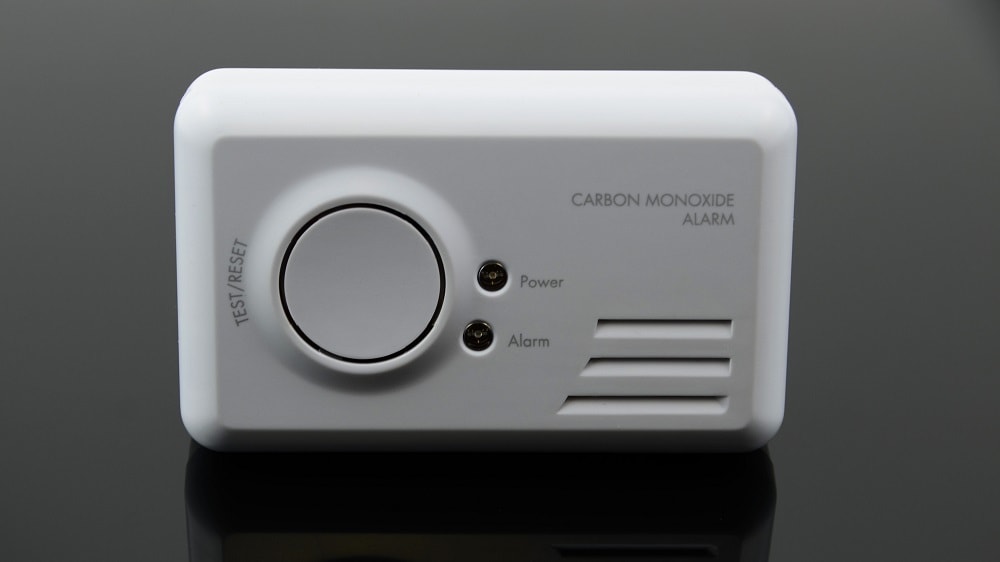
How a carbon monoxide detector works
A carbon monoxide detector measures the concentration of CO in the air. The measurement is very accurate and is expressed in PPM (parts per million). There is a gel in the carbon monoxide detector and as soon as it is exposed to a higher concentration of CO than the standard for a certain period of time, a chemical reaction occurs, after which the device emits a signal.
Exactly how quickly the device sends out a signal depends on the situation. The size, the ventilation of and the air flows in the room play a role here, as does the placement of the detector. The type of carbon monoxide detector also makes a difference.
For example, there are types that give a pre-alarm. This is a first alert carbon monoxide detector, which gives you the time to take action and to air and leave the room. If the concentration of carbon monoxide continues to increase, the main alarm will sound.
As soon as the signal sounds, it is important that you provide ventilation as soon as possible by opening the doors and windows and turning off all combustion devices if possible. Then quickly leave the house and call the fire brigade and possibly medical help if you suspect CO poisoning.
Do not enter the house until the alarm no longer sounds and a check has been made by the fire brigade. In that case, it is still important that you have the cause of the release of the carbon monoxide identified and resolved. Otherwise the problem can only be solved temporarily and that is a risk you should not want to take.
Parts of a carbon monoxide detector
A carbon monoxide detector usually has the following parts:
- The test button. You use the test button in different situations. With this you test whether the detector functions properly, you use it to switch off the alarm signal and with some types you register the device at the gateway and test the connection with it.
- Status light. This light indicates the status of the detector. For example, the light provides information about the battery, but it also flashes in the event of an alarm. What the light indicates exactly and in what way, depends on the type of detector and you can read it back in the manual.
- Battery compartment. This is where you place the battery. Some types depend on the battery for power supply and other types are connected to the mains and have the battery only as a backup power supply.
- Mounting holes and bracket. These are for attaching the carbon monoxide detector.
Types of carbon monoxide detectors
There are several types of carbon monoxide detectors. First of all, we make a distinction between detectors with a power supply from a battery and detectors with a power supply from the mains.
Detectors with a power supply from the mains are connected to the mains, so you don’t have to worry about the battery draining. You also don’t have to worry about a power outage, because most models are equipped with a back-up battery.
The detectors that work on batteries can also be subdivided. You can choose between replaceable alkaline batteries and integrated lithium batteries. The first is cheaper than the second, but you have to replace it regularly. It is important not to forget this in order to guarantee the safety and operation of the detector.
The second option is usually more expensive, but is a more durable solution. You don’t have to worry about changing the battery, which is safer. Keep in mind the life of the device. The life of the detector is equal to that of the battery: about 7 to 10 years. This is relatively beneficial in the long run.

You can also opt for a combination detector. This is a carbon monoxide and smoke detector in one. This option saves on the purchase of two separate devices, but is not usable everywhere. It is only recommended to install a combination detector in rooms where there is a combustion appliance.
In such rooms, the advice regarding placement of both detectors is the same. When there is a fire, smoke and CO rise to the ceiling because of the heat. In the absence of that heat (i.e. in rooms without combustion appliances), CO mixes evenly with the air and does not rise.
In rooms with a combustion device, the air is warmer, which means that the CO2 also rises, which is why a combination detector should be placed there. The advice regarding the placement of carbon monoxide detectors depends on the situation. I’ll tell you more about that later.
Pay attention!
With a combination detector, pay attention to the specifications that belong to both the carbon monoxide detector and the smoke detector; after all, you don’t want to compromise on quality. The best combination detector consists of a good carbon monoxide detector and a good smoke detector.
There are also carbon monoxide detectors with a display. They not only give an alarm signal when the concentration is too high, but you can also read the amount of CO in the room. There are also smart carbon monoxide detectors that you can operate via an app and where information such as battery life and CO concentration can be read in the app.
If you purchase a smart carbon monoxide detector or combination detector, you can connect it to a smart thermostat. The best smart thermostats on the market have the function to automatically close the heating gas valve as soon as danger is detected on a carbon monoxide or smoke detector.
Placement of the carbon monoxide alarm
Not only is it important that you place a carbon monoxide detector in your home, but the correct placement and number is also important. I mentioned above that the location of the detector depends on the room and its circumstances. You can read more about this here, so that you can be extra sure that the carbon monoxide detector does its job correctly.

The base
Every room and every situation requires a different placement of the carbon monoxide detector, but it is in any case advisable to purchase at least one carbon monoxide detector and place it in a source room: the room where your central heating boiler is installed.
It is also recommended to install a detector in rooms with combustion appliances, such as geysers and stoves, and in frequently used areas such as the living room and bedroom. The number of detectors depends on your living situation and your budget. If you are limited in the number of detectors, give priority to rooms without ventilation.
Regardless of the room, you always ensure that the detector:
- is not placed in the draft or near existing air inlets or outlets;
- does not hang behind or in an object such as curtains, cupboards or other furniture;
- is not mounted in damp or wet places, as well as in very dry and dusty places;
- and is not mounted in a location subject to extreme temperatures or temperature fluctuations.
Rooms with a combustion appliance

In rooms with a combustion appliance, the carbon monoxide rises due to the heat. Hang the detector from the ceiling and take the following into account:
- Keep a distance of 1 to 3 meters from the possible carbon monoxide source: the combustion appliance.
- Hang the detector at least 30 centimeters away from the surrounding walls.
- Place the detector as centrally as possible in the room, but keep the two points above in mind.
The same goes for sloping ceilings. Try to mount the detector as high as possible on the ceiling.
Rooms without combustion device
In rooms without a combustion device, the heat emitted by a combustion device is lacking. The CO does not rise here, so it is not recommended to hang the carbon monoxide detector from the ceiling. Follow these guidelines:
- Hang the detector at breathing height. In the bedroom this is at the height of your breath when you sleep and in other rooms it depends on the activity that mainly takes place there: lying, sitting, standing, and so on.
- Place the detector at least 15 centimeters away from the ceiling, the floor and the windows and doors.
- Make sure the device is as close to your breathing zone as possible. In the bedroom, for example, this is close to the bed.
Maintenance and points of attention
There are a number of things to keep in mind with carbon monoxide detector and alarm. One of the most important of those things is the NEN-EN 50291 standard. Fire detectors that meet this standard meet the technical requirements and that says something positive about the quality of the carbon monoxide detector.
Also look at when the detector gives a signal. A good carbon monoxide detector also gives a signal if the battery is low or if the device is outdated. The sound signal must also be distinct from that of the smoke detector and be relatively loud. The sound signal from the detector should be at least 75 decibels.
Test the device regularly with the test button, occasionally clean the detector by removing any dust with a cloth and take into account the expiration date of the detector. Each detector lasts for a certain amount of time. Some types have a shelf life sticker, with others you have to pay attention to replace the device in time.
Price of carbon monoxide detectors
The prices of carbon monoxide detectors for domestic use range from 10 euros to 200 euros, but are usually around 30 euros. This amount is often higher for professional use. The price depends, among other things, on the warranty, the lifespan of the device and the type of battery it contains.
An expensive detector is often more beneficial in the long run than a cheap detector. Keep the costs in mind over the years. If you buy a detector for 10 euros every year over a period of 5 years, you will pay more in the long run than if you buy one detector for 30 euros once every 15 years.
Review the 5 best carbon monoxide detectors and alarms
1. ELRO FF1840 Fire Prevention Set
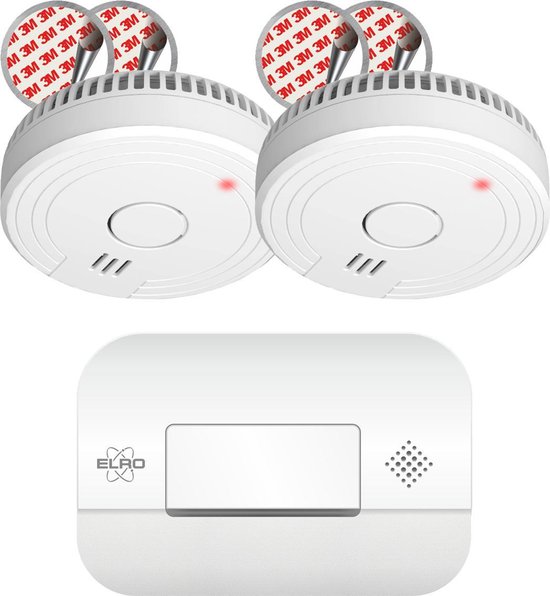
Type of standard: NEN-EN 14604:2005/C1:2008 certification | NEN-EN 50291-1 certification
Controls: Buttons
With display: No
Power type: Operates by battery
Manufacturer’s warranty: 5 years
For detection of: Smoke | Carbon monoxide
With test button: Yes
Noise level: 85 dB
Sensor life: 10 years
2. Smartwares FGA-13041 Carbon Monoxide Alarm
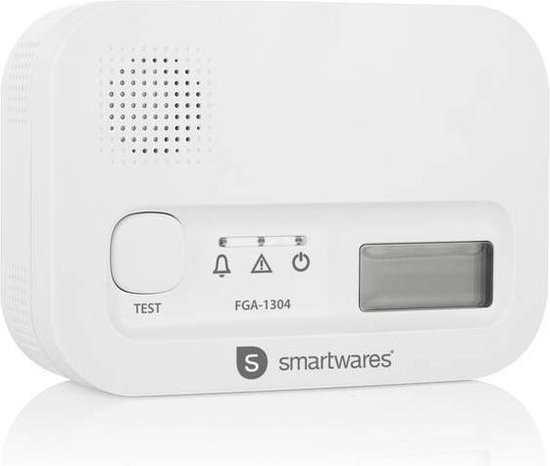
Type of standard: NEN-EN 14604:2005/C1:2008 certification
Operation: Manual
With display: Yes
Power type: Operates by battery
Manufacturer’s warranty: 2 years
For detection of: Carbon monoxide
With test button: Yes
Noise level: 85 dB
Sensor life: 10 years
3. Google Nest Protect
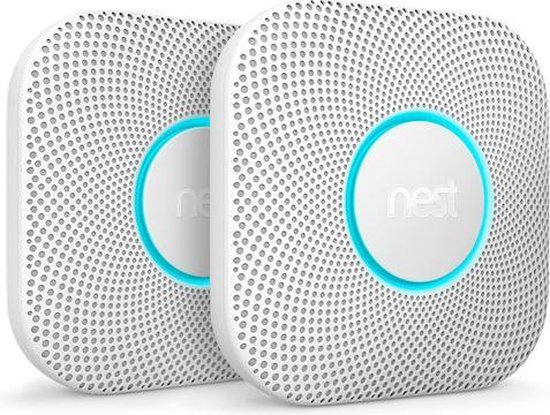
Type of standard: NEN-EN 50291-1 certification
For detection of: Smoke | Carbon monoxide
Control: Control via WiFi | Buttons
With test button: Yes
With display: No
Noise level: 85 dB
Power type: Operates by battery
Manufacturer’s warranty: 2 years
Sensor life: 10 years
4. Alecto SCA-10 Combination Detector (10 years)
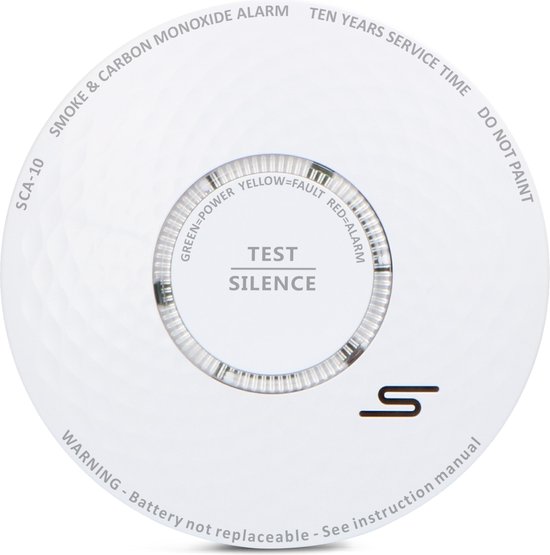
Type of standard: NEN-EN 14604:2005/C1:2008 certification | NEN-EN 50291-1 certification
For detection of: Carbon monoxide | Smoke
Controls: Buttons
With test button: Yes
With display: No
Noise level: 85 dB
Power type: Operates by battery
Manufacturer’s warranty: 2 years
Sensor life: 10 years
5. Grundig Carbon Monoxide Detector
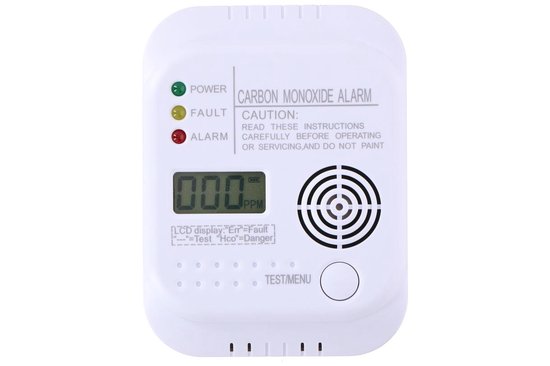
Type of standard: NEN-EN 50291-1 certification
For detection of: Carbon monoxide
Controls: Buttons
With test button: Yes
With display: Yes
Noise level: 85 dB
Power type: Operates by battery
Manufacturer’s warranty: 6 months
Sensor life: 7 years
Carbon Monoxide Alarm FAQs
📍 Where should you hang a carbon monoxide detector?
You hang carbon monoxide detectors in rooms with possible carbon monoxide sources, i.e. combustion appliances such as stoves, and in frequently used rooms. Hang the detector in rooms with a combustion appliance on the ceiling at 1 to 3 meters from the possible source, and 30 centimeters away from the walls.
In other rooms, you hang the detector at the breathing level at least 15 cm away from the ceiling, the floor and the windows and doors. In any case, make sure that the detector is not placed in a draft and that it is not placed behind or in an object.
📏 How high should a carbon monoxide detector be mounted?
This depends on the space. In a room with a combustion appliance such as a stove, hang the carbon monoxide detector from the ceiling. In other rooms, hang the detector at the breathing level at least 15 centimeters away from the ceiling, the floor and the windows and doors.
🔊 What should you do if your carbon monoxide detector alarms?
When the alarm goes off, it is important that you act quickly. Open windows and doors, turn off any source (if possible) and leave the house as soon as possible. Call the fire brigade and seek medical attention if you suspect that someone has been a victim of carbon monoxide poisoning. Find out the cause and solve it as soon as possible.
Which carbon monoxide detector should I buy?
That’s entirely up to you and your budget; everyone is unique. What I do have for you is a handy table with what I believe are the most important specifications of the best carbon monoxide detector. That way you make the best choice!
Currently, these are the best carbon monoxide detectors and alarms in my opinion:
- ELRO FF1840 Fire prevention set
- Smartwares FGA-13041 Carbon monoxide detector
- Google Nest Protect
- Alecto SCA-10 Combi detector (10 years)
- Grundig Carbon monoxide detector
Conclusion
A carbon monoxide detector wouldn’t look out of place in any home, including yours. It is important to purchase a good carbon monoxide detector and to install it correctly.
I hope I was able to help you choose the best carbon monoxide detector and alarm for you and your household. You can take a look at the top 5 best carbon monoxide detectors above. Feel free to let me know whether this article helped you!